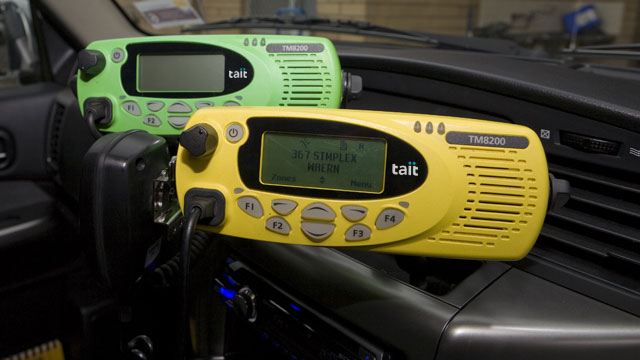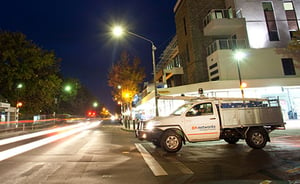Fire and Emergency Services Authority, WA, Australia
Fire and Emergency Services Authority of Western Australia (FESA) bring together the Fire and Rescue Service, Bush Fire Service, State Emergency Service, Volunteer Marine Rescue Services, Emergency Management Services, Community Safety Services. It has 30,000 emergency service volunteers and 900 career fire fighters across 965,255 square miles (2.5 million square kilometers).

"It was pure magic to have Sea Rescue, SES and Police all talking on common ground. Before, we had to station an SES vehicle on top of a hill and (manually) relay messages. Now a vehicle can be stationed and used as a repeater and release manpower to other areas… which is always at a premium."
Situation
Prior to the establishment of FESA, individual services operated radio communications on different networks which were experiencing network congestion.
Lack of interoperability between FESA divisions, Department of Environment and Conservation (DEC) and other emergency services throughout Western Australia was an issue raised in numerous post-emergency incident reviews, reports and coroner inquiries.
FESA needed to consolidate operational radio networks to VHF High Band or UHF, while incorporating UHF CB channels so that all services could communicate throughout the state. This required dual band radios in each vehicle to provide access to both UHF and VHF networks.
They also considered including Radio over Internet Protocol (RoIP) to extend radio voice and control signals over their Wide Area Network.
Response
Tait and FESA worked together to improve the safety of FESA staff and volunteers and streamline radio communications.
Tait created two dual-band radios with different colored control heads (green and yellow) so users could easily identify the correct radio. The volume level can be different in the two radios so users can tell which radio the communications were coming through, without compromising the audio clarity. The radios can work in cross band mode, which can extend coverage and minimize the impact of dead spots.
GPS data is appended to every dual band radio message for vehicle location tracking. With RoIP vehicles can be tracked state wide, ultimately improving staff safety and emergency response coordination.
With temperatures up to 176°F (80°C) inside the vehicles, Tait developed a high-temperature display so the mobile screen can be easily viewed despite the heat or bright sunlight.
Outcomes
FESA has been able to stage costs over a number of years with a phased rollout. Tait guarantees that the first TM8000 radio would be identical to the last, even if new functionality is added.
Other client stories you may be interested in
%20for%20Whats%20New%2c%20Discover%2c%20Bottom%20Cards%20Listing/Case%20Studies/Enel-440x270.jpg?width=300&name=Enel-440x270.jpg)

%20for%20Whats%20New%2c%20Discover%2c%20Bottom%20Cards%20Listing/Case%20Studies/Talquin-440x270.jpg?width=300&name=Talquin-440x270.jpg)
%20for%20Whats%20New,%20Discover,%20Bottom%20Cards%20Listing/Case%20Studies/LFB-440x270.jpg?width=440&height=270&name=LFB-440x270.jpg) London Fire Brigade - UK
London Fire Brigade - UK
Tait Communications and its partner Radiocoms Systems Limited are proud to be selected by London Fire Brigade (LFB) to supply its firefighters with new fireground radio equipment which meets the Brigade's requirements for improved range, clarity, safety, and long-term support.
%20for%20Whats%20New,%20Discover,%20Bottom%20Cards%20Listing/Case%20Studies/Andalucian-Regional-Government-440x270.jpg?width=440&height=270&name=Andalucian-Regional-Government-440x270.jpg) Andalucian Regional Government - Spain
Andalucian Regional Government - Spain
Tait Communications expertise is at the heart of a large public-safety investment in southern Spain, which is connecting the region’s emergency response agencies and national bodies with a single highly reliable mobile communication system..
%20for%20Whats%20New,%20Discover,%20Bottom%20Cards%20Listing/Case%20Studies/PSN-440x270.jpg?width=440&height=270&name=PSN-440x270.jpg)